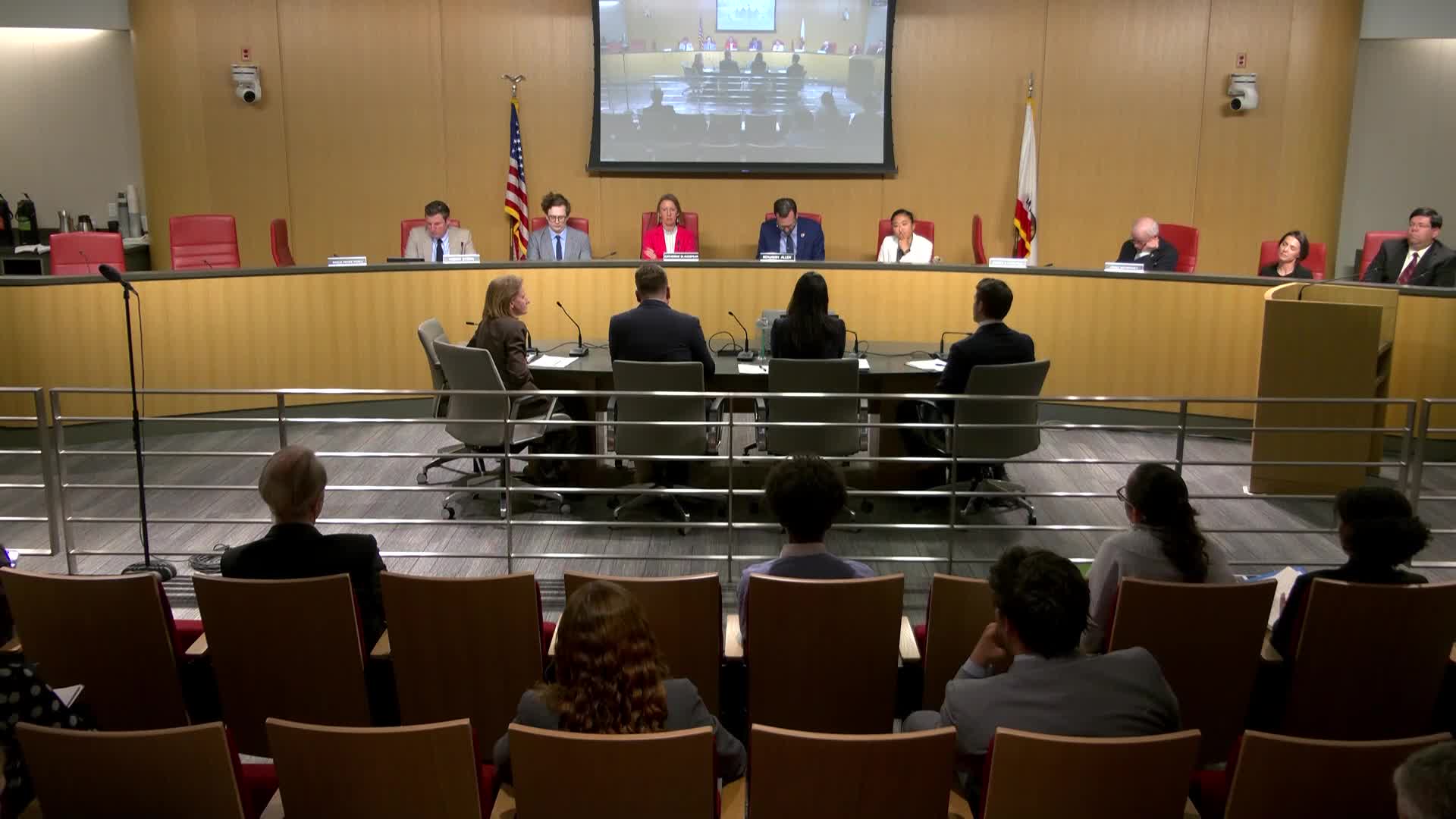California Legislature Explores Cap and Trade Reform for Equity and Affordability
May 08, 2025 | California State Senate, Senate, Legislative, California
This article was created by AI summarizing key points discussed. AI makes mistakes, so for full details and context, please refer to the video of the full meeting. Please report any errors so we can fix them. Report an error »

In a pivotal meeting held by the California State Senate on May 8, 2025, lawmakers and environmental advocates gathered to discuss the future of the state's cap-and-trade program, a key component in California's strategy to combat climate change. The atmosphere was charged with urgency as stakeholders voiced concerns over the program's effectiveness and its impact on vulnerable communities.
At the heart of the discussions was the distribution of funds generated by the cap-and-trade system. Currently, approximately 45% of the allowances support the Greenhouse Gas Reduction Fund (GGRF), while 41% are allocated to utilities, and 14% to large emitters, primarily in the oil and gas sector. This allocation, set by regulation rather than statutory instruction, has raised questions about its fairness and effectiveness in achieving climate goals.
Connie Cho, a senior policy advisor at the Asian Pacific Environmental Network, emphasized the need for reform, arguing that the current structure disproportionately burdens low-income communities and communities of color living near polluting industries. "Our people cannot afford us not to be here right now," she stated, highlighting the urgent need for changes that prioritize affordability and equity in the cap-and-trade program.
The meeting also featured discussions on the complexities of the cap-and-trade system, with some participants noting that the oil industry has historically influenced its regulations to protect their interests, often at the expense of consumers. As gas prices continue to rise, advocates called for a reevaluation of the program to ensure it aligns with California's climate objectives while also addressing the economic realities faced by residents.
Sami Dan, co-founder of Net 0 California, presented an analysis of the program's expenditures, revealing that while significant funds have been allocated, many projects lack cost-effectiveness in reducing greenhouse gases. He proposed a framework for optimizing investments in infrastructure, technology, and resilience, suggesting that public funding could be utilized more effectively through low-cost loans rather than traditional grants.
As the meeting progressed, lawmakers grappled with the volatility of the cap-and-trade fund, seeking ways to create more predictable revenue streams. Suggestions included narrowing the price collar to stabilize allowance prices, which could help reduce uncertainty for future budgeting.
The discussions underscored a critical moment for California's environmental policies, as stakeholders called for a balanced approach that integrates climate action with social equity. With the stakes high and the clock ticking, the outcome of these deliberations could shape the state's environmental landscape for years to come, leaving many to wonder how California will navigate the complex intersection of climate policy and community needs.
At the heart of the discussions was the distribution of funds generated by the cap-and-trade system. Currently, approximately 45% of the allowances support the Greenhouse Gas Reduction Fund (GGRF), while 41% are allocated to utilities, and 14% to large emitters, primarily in the oil and gas sector. This allocation, set by regulation rather than statutory instruction, has raised questions about its fairness and effectiveness in achieving climate goals.
Connie Cho, a senior policy advisor at the Asian Pacific Environmental Network, emphasized the need for reform, arguing that the current structure disproportionately burdens low-income communities and communities of color living near polluting industries. "Our people cannot afford us not to be here right now," she stated, highlighting the urgent need for changes that prioritize affordability and equity in the cap-and-trade program.
The meeting also featured discussions on the complexities of the cap-and-trade system, with some participants noting that the oil industry has historically influenced its regulations to protect their interests, often at the expense of consumers. As gas prices continue to rise, advocates called for a reevaluation of the program to ensure it aligns with California's climate objectives while also addressing the economic realities faced by residents.
Sami Dan, co-founder of Net 0 California, presented an analysis of the program's expenditures, revealing that while significant funds have been allocated, many projects lack cost-effectiveness in reducing greenhouse gases. He proposed a framework for optimizing investments in infrastructure, technology, and resilience, suggesting that public funding could be utilized more effectively through low-cost loans rather than traditional grants.
As the meeting progressed, lawmakers grappled with the volatility of the cap-and-trade fund, seeking ways to create more predictable revenue streams. Suggestions included narrowing the price collar to stabilize allowance prices, which could help reduce uncertainty for future budgeting.
The discussions underscored a critical moment for California's environmental policies, as stakeholders called for a balanced approach that integrates climate action with social equity. With the stakes high and the clock ticking, the outcome of these deliberations could shape the state's environmental landscape for years to come, leaving many to wonder how California will navigate the complex intersection of climate policy and community needs.
View full meeting
This article is based on a recent meeting—watch the full video and explore the complete transcript for deeper insights into the discussion.
View full meeting
